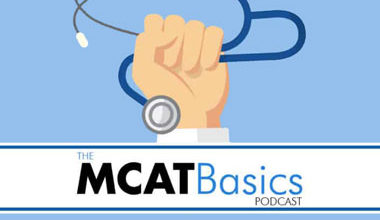-
MCAT Basics Podcast
Fat and Protein Metabolism
In this episode, we’ll nail down all that is needed for the MCATB in relation to fat and protein metabolism. Two critical processes for gaining energy and maintaining cellular functions in the body. We’ll learn about the intricate details of…
Read More » -
MCAT Basics Podcast
Social Norms & Deviance
Social norms and deviance as covered in the MCAT is a fascinating topic, and in this episode, we’ll break down the intersection of social norms—folkways, mores, taboos, and laws—how they play a crucial role in shaping societal values, and what…
Read More » -
MCAT Basics Podcast
Population Genetics
In this episode, we discuss population genetics and see how genetically related individuals share the same alleles, delving into the mechanisms of gene flow and genetic drift. We’ll also unravel the complexities of hybrid vigor, reproductive isolation, and natural selection,…
Read More » -
MCAT Basics Podcast
Common Hormone Axes
In this episode, we’ll explore three crucial hormone axes: the hypothalamic-pituitary-adrenal (HPA) axis, the hypothalamic-pituitary-gonadal (HPG) axis, and the renin-angiotensin-aldosterone (RAAS) system. We’ll decode the complex interplays among the hypothalamus, pituitary gland, and various peripheral organs, focusing on how these…
Read More » -
MCAT Basics Podcast
The Excretory System
In this episode, we’re covering the anatomy and physiology of key organs such as the kidneys, liver, skin, lungs, and large intestine, and discuss the crucial role they play in eliminating waste products from our bodies. From the structure of…
Read More » -
MCAT Basics Podcast
Sleep and Circadian Rhythms
This episode is packed with essential high-yield information for your MCAT prep, covering the biological, physiological, and psychological aspects of sleep. We’ll explore various sleep theories, like the Memory Consolidation and Brain Plasicticity Theories, and even discuss the controversial “Sleeping…
Read More » -
Uncategorized
The Endocrine System
In this episode, we’ll cover crucial aspects such as hormones, their origins and mechanisms of action, and the various structures within the endocrine system. We’ll also decode complex cell-to-cell communication and distinguish between different hormone types—peptide, protein, steroid, and lipid-derived.…
Read More » -
MCAT Basics Podcast
The Digestive System
In this episode, we’ll break down the intricate processes of nutrient digestion and absorption, from the mechanical and chemical digestion in the stomach to the vital role of the small and large intestines. We’ll also discuss the regulatory mechanisms involving…
Read More » -
MCAT Basics Podcast
Electrochemistry
In this episode of MCAT Basics, we’ll cover Electrochemistry. We start with the role of salt bridges in electrochemical cells and cover the intricacies of cell notation. We’ll also discuss how ions maintain charge balance, the importance of reduction and…
Read More » -
MCAT Basics Podcast
Biological Membranes
This MCAT Basics podcast covers biological membranes. First, the podcast introduces a few topics regarding membranes: what they are, how they are formed, their presence in the cell, and cell-to-cell junctions. Second, it addresses transport through the membrane, including simple…
Read More »
